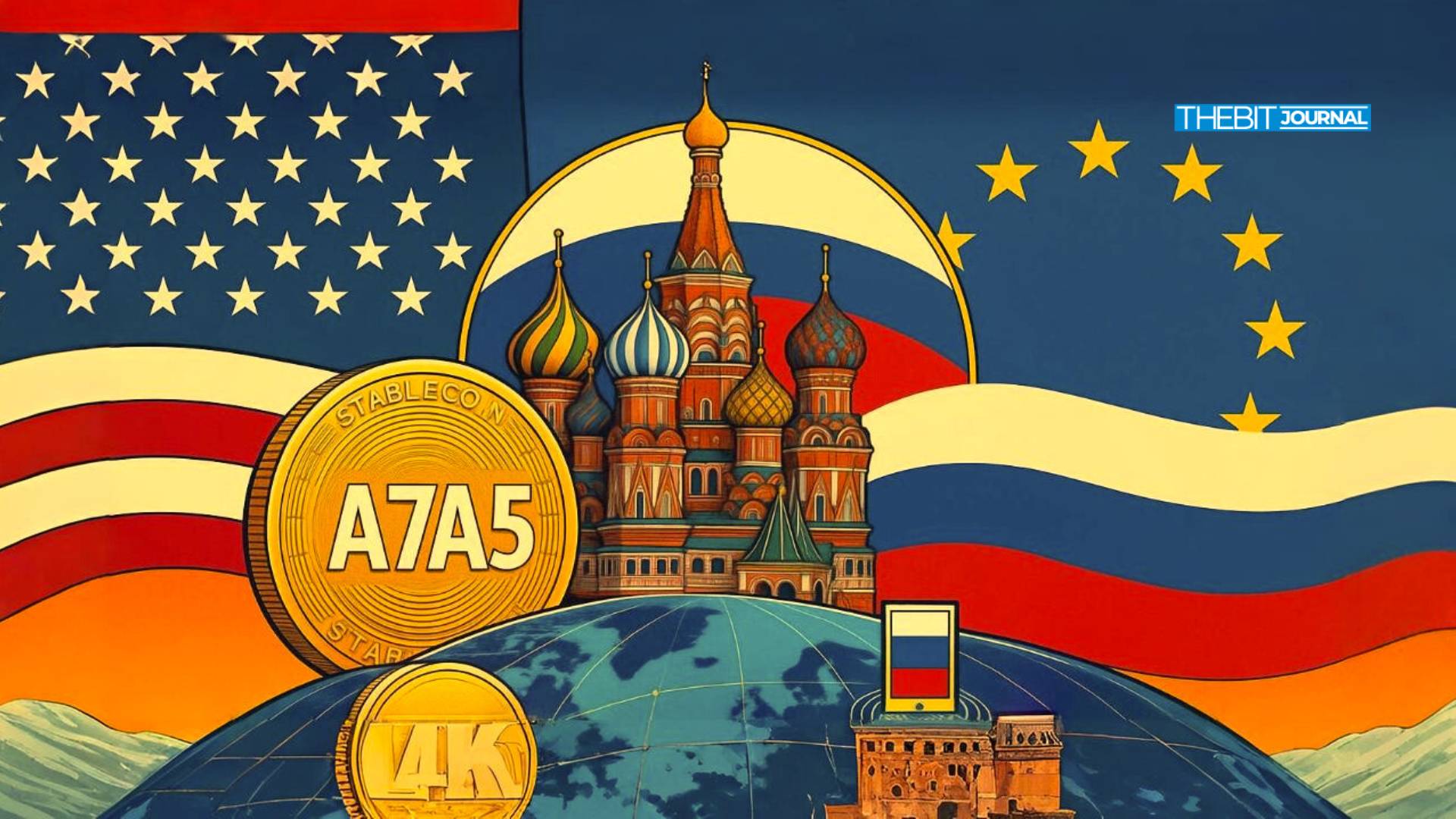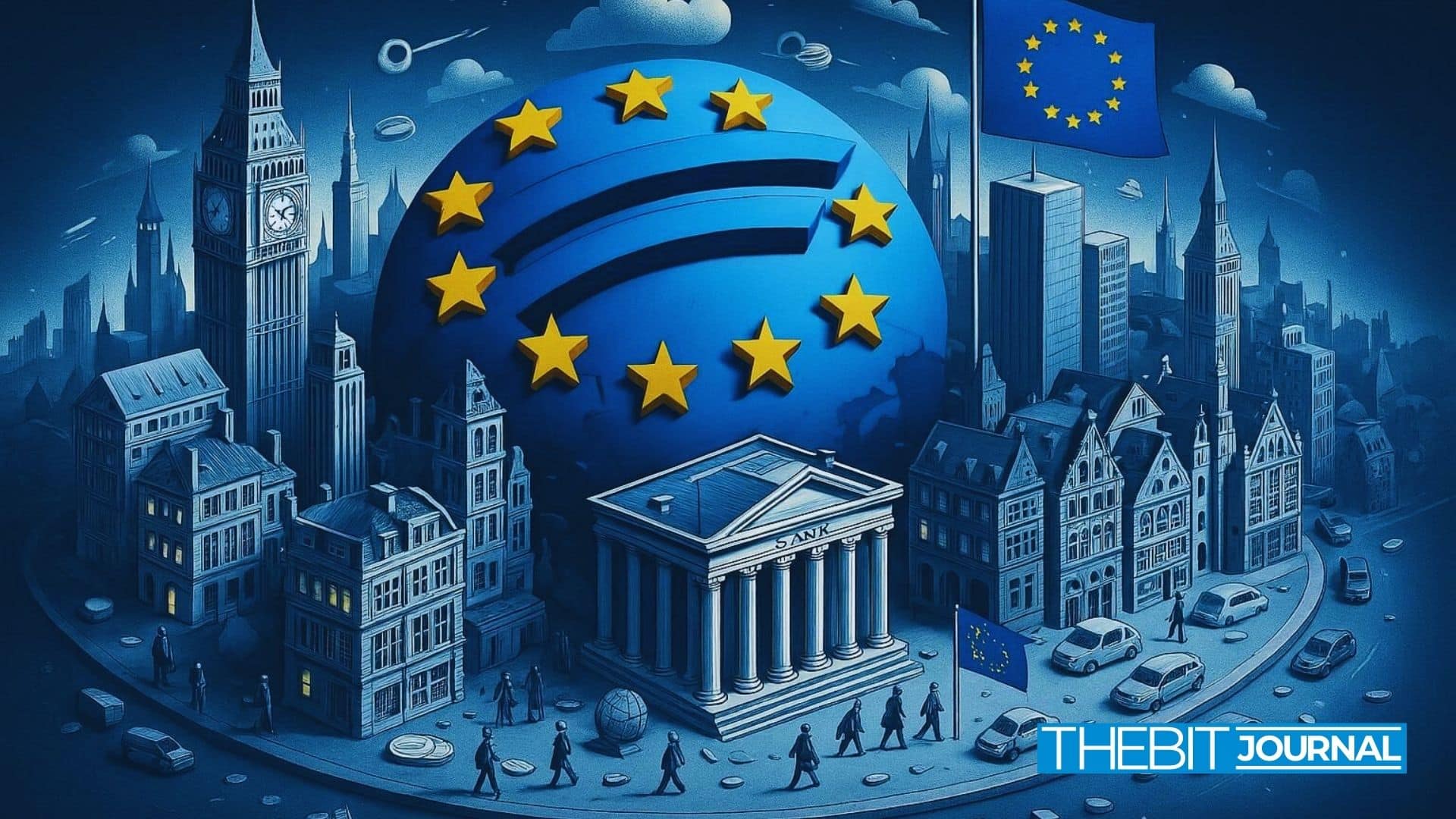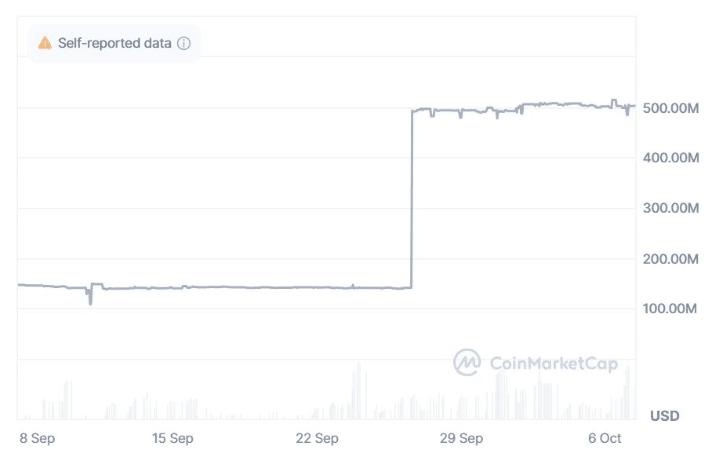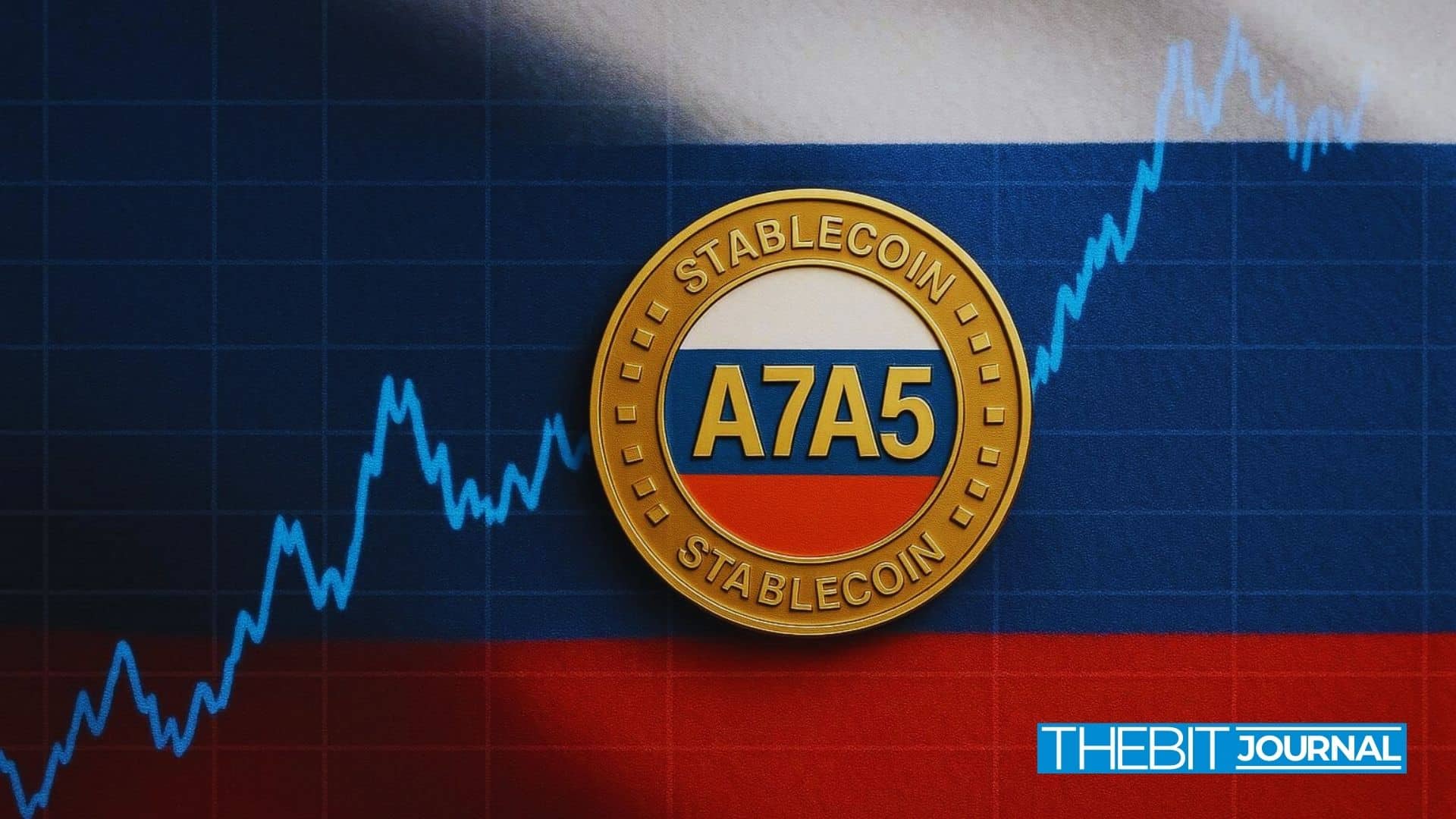New EU Crackdown Aims at Ruble Stablecoins: Will Bitcoin Feel the Shock?
0
0

The European Union is considering new EU sanctions targeting A7A5, a ruble-backed stablecoin that has quickly become the world’s largest non-US-dollar pegged digital asset, in a move to curb Russia’s use of crypto to bypass financial restrictions.
As reported by Bloomberg based on internal EU documents, the proposal would bar EU-based persons and organizations from dealing directly or indirectly with the A7A5 token. The action is one of many EU sanctions designed to prevent the possibility of loopholes that can see sanctioned Russian participants transact via the use of digital assets.
EU Sanctions Expand Across Regional Banks

The EU sanctions that have been suggested are reportedly spread to various banks in Russia, Belarus and Central Asia who are accused of facilitating crypto-related transfer of blacklisted individuals.
The relocation is the most recent attempt of the EU to increase its control over the digital finance access points of Russia following a September 19 order that limited the crypto service provision to Russian nationals and foreign banks involved in crypto-related activities in Russia.
Moldovan banker Ilan Shor issued A7A5 in February in partnership with state-owned Promsvyazbank, Russia, and works on both Ethereum and Tron. It purports to be supported by fiat reserves that are deposited in Kyrgyzstan banks.
In spite of European Union sanctions and being banned in Singapore, the A7A5 representatives attended the Token2049 crypto conference, where the project was subsequently dropped off official listings in response to public criticism.
📍A7A5 at TOKEN2049: How non-USD stablecoins are reshaping global finance
At the flagship crypto conference in Singapore, A7A5 presented a strategic view on the future of stablecoins. Key points from the talk by Oleg Ogienko, Director of International Development:
🔵 By 2028,… pic.twitter.com/hkF5aDehn9
— A7A5 (@A7A5official) October 2, 2025
EU Sanctions Trigger A7A5 Market Surge
Crypto assets are not the only part of the Russian plan to avoid Western and EU sanctions. According to analysts at Integrity Risk International, Moscow is running a huge shadow fleet of hundreds of vessels with the purpose of smuggling oil and hiding trade routes.
Another instance of involvement in illicit gold trade by Russia to launder money and finance state operations was noted by Rand Corporation in a December 2024 report.
The ruble-backed stablecoin was dramatically gaining value due to the recent European Union sanctions. The market capitalization of A7A5 shot up to more than $491 million on September 26, a 250 percent rise in a one-day period, only a week after the crypto restrictions by EU came into force, according to the CoinMarketCap data.

EU Sanctions Await Member State Approval
On Monday, the market cap of the token is in the range of $500 million, which represents approximately 43% of the non-USD market of the stablecoins. Circle euro-pegged EURC is the next biggest competitor with a valuation of about $255 million.
According to EU law, the European Union sanctions have to be unanimously passed by all the 27 EU member countries before they can be implemented. It is possible that the current proposal can still be modified/ postponed, according to Bloomberg.
European Council has also reaffirmed that EU sanctions are a means of having an effect on the actions of those who are behind the policies that EU wants to reform in accordance with the goals of the Common Foreign and Security Policy.
Also read: Will a Europe-U.S. BTC Reserve Race Take Shape?
A7A5 Faces International Regulatory Pressure

The proposed A7A5 sanctions would be the result of a series of synchronized efforts by the United States and the United Kingdom, which in August hit financial services chains that are said to assist the Russian system in avoiding sanctions.
Among the blacklisted were Capital Bank of Central Asia, its director Kantemir Chalbayev and Kyrgyz-based crypto exchanges Grinex and Meer both alleged to fund the infrastructure of A7A5.
Should this be approved, the EU sanctions may represent one of the most intensive coordinated crackdowns of Russia-related digital property to date, signaling a larger desire to seal off cryptocurrency as a sanctions evasion strategy.
Also read: Russia vs. U.S.: How The Race to Rule Bitcoin Mining Is Heating Up
Conclusion
Based on the latest research, the proposed EU sanctions against A7A5 underscore the bloc’s growing determination to curb Russia’s use of digital assets for sanction evasion. With its acceptance, these steps might reorganize the crypto regulation across the globe, narrowing financial arteries and modifying the future of non-dollar stablecoins on a global scale.
For more expert reviews and crypto insights, visit our dedicated platform for the latest news and predictions.
Follow us on Twitter and LinkedIn, and join our Telegram channel to be instantly informed about breaking news!
Summary
The European Union is reportedly preparing new sanctions against A7A5, a Russian ruble-backed stablecoin, to prevent Moscow from using crypto to evade Western restrictions. The proposal would prohibit the EU entities from engaging with the token and other institutions in Russia, Belarus, and Central Asia. The market value of A7A5 has risen by 500 million upon these prior crypto sanctions. The measure only has to be approved by the 27 EU member states.
Glossary of Key Terms
A7A5: A ruble-backed stablecoin issued by Ilan Shor and Promsvyazbank, linked to Russia’s crypto system.
EU Sanctions: Restrictive measures by the European Union to limit Russia’s financial and crypto activities.
Stablecoin: A cryptocurrency pegged to a stable asset like fiat currency to reduce volatility.
Promsvyazbank: A Russian state-owned bank supporting A7A5’s issuance and operations.
Ilan Shor: Moldovan banker behind the launch of A7A5.
European Council: EU institution responsible for approving or rejecting sanctions unanimously.
Integrity Risk International: Analytical firm that investigates global financial risks and sanctions evasion activities.
Rand Corporation: Research organization reporting on Russia’s illicit financial activities like oil and gold trade.
Token2049: A major crypto conference attended by A7A5 representatives before being delisted.
Frequently Asked Questions about EU Sanctions on A7A5
1. What is A7A5?
A7A5 is a Russian ruble-backed stablecoin launched by Ilan Shor and Promsvyazbank, operating on Ethereum and Tron networks.
2. Why is the EU targeting A7A5?
The EU is considering sanctions on A7A5 to prevent Russia from using cryptocurrency to bypass Western financial restrictions.
3. Who else is affected by the proposed EU sanctions?
Several banks and crypto exchanges in Russia, Belarus, and Central Asia, including Grinex and Meer, may face restrictions.
4. When will the EU sanctions take effect?
The sanctions require approval from all 27 EU member states and may be amended before final implementation.
Read More: New EU Crackdown Aims at Ruble Stablecoins: Will Bitcoin Feel the Shock?">New EU Crackdown Aims at Ruble Stablecoins: Will Bitcoin Feel the Shock?
0
0
 Manage all your crypto, NFT and DeFi from one place
Manage all your crypto, NFT and DeFi from one placeSecurely connect the portfolio you’re using to start.






